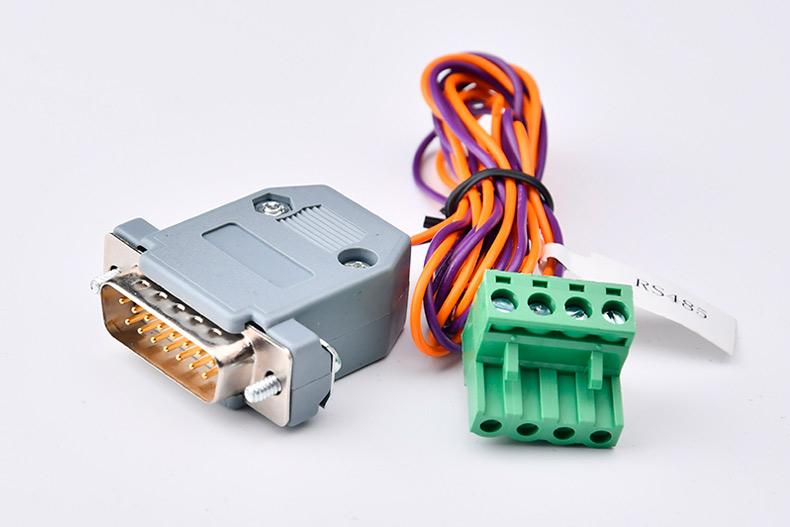By no means Lose Your Rs485 Cable Once more
페이지 정보
작성자 Floy 작성일 24-06-08 08:23 조회 3 댓글 0본문
Generally, RS485 cables can support data rates ranging from 100 kbps to 10 Mbps, making them suitable for a wide range of industrial applications. The capacitance is close to 12.5 pF/foot but there is a small impedance mismatch (100 ohms for Cat 5, 120 ohms for RS-485). With a typical capacitance of 15 pF/ft. The cables also have a balanced line configuration, which helps to further enhance noise rejection and signal integrity. All communication cabling to be installed in a daisy chain configuration, no T’s are permitted. LAPP UNITRONIC ® BUS LD cables are built after the RS-422 and RS-485 standards and are robust solutions for transmitting data over long distances and noisy environments. In some countries, inserting two cables into the same screw terminal is permitted. RS485 is a serial data transmission interface standard that enables communication with sensors attached to the same bus (wires). The Modbus protocol further enables RS485 by allowing a master to send and receive data from specific sensors on the bus or to communicate with all the sensors simultaneously.
The RS485 system used for Modbus communication provides a main cable (Bus or backbone), to which all the devices have to be connected with branches (also known as stubs) that are as short as possible. If a star configuration is unavoidable, special RS-485 repeaters are available which bidirectionally listen for data on each span and then retransmit the data onto all other spans. You will be able to determine the actual configuration based on the documentation that accompanied the device. Each device has a communication port with two terminals, which are indicated for the sake of convenience as A and B. In these two terminals the communication cable is connected so that all the devices that take part in the communication are connected in parallel. A Modbus RS485 connects a Master device to one or more Slave devices. RS-485 is used as the physical layer underlying many standard and proprietary automation protocols used to implement industrial control systems, including the most common versions of Modbus and Profibus. Overall, RS485 cables are known for their robustness, reliability, and versatility, making them a popular choice for industrial automation, building control systems, and other applications requiring stable and secure communication over extended distances.
Manufacturers are continuously improving the design and materials used in RS485 cables to ensure reliable and efficient data transmission in industrial environments. RS485 cables typically consist of twisted pairs of wires with a characteristic impedance of 120 ohms, which helps reduce signal reflections and interference. RS485 cables typically consist of twisted pairs of wires with a characteristic impedance of 120 ohms, which helps to minimize signal reflections and interference. 2 wires is all you need to make it work. The most common cable type is Cat 5e-UTP (unshielded twisted pair) which may work over shorter distances in less demanding applications with low EMI noise levels. 5 should work in your situation because of the voltage you will be running (5-10V) and your signal is not high frequency (above 500Mhz) in the first place. Without termination resistors, signal reflections off the unterminated end of the cable can cause data corruption. 3 Pin CAN Master Cable, 1 Meter.

Gepco a Belden Brand, Flexible DMX512 Lighting Control Cable, 4 Conductor 24 AWG (7x32) stranded tinned copper, Foam PE insulation, foil shield plus 90% TC braid with 24 AWG stranded TC drain wire, all weather TPE jacket. It may be used to control video surveillance systems or to interconnect security control panels and devices such as access control card readers. The equipment located along a set of RS-485 wires are interchangeably called nodes, stations or devices. RS-485 signals are used in a wide range of computer and automation systems. This allows RS-485 to implement linear bus topologies using only two wires. Star and ring topologies are not recommended because of signal reflections or excessively low or high termination impedance. 12 V, i.e. ±7 V on top of the 0-5 V signal range. SC, G or reference, the common signal reference ground used by the receiver to measure the A and B voltages.
If you cherished this article and you would like to obtain more info relating to rs485 cable kindly visit our web site.
- 이전글 The New Fuss About 台北 撥筋
- 다음글 How To Tell If You're Ready To Go After Can I Buy From A Uk Website
댓글목록 0
등록된 댓글이 없습니다.

